DataCore vFilO Software: Next-Gen Distributed File and Object Storage Virtualisation Technology
Priced per terabyte, with one price for active data and lower price for inactive archives, designed to help enterprises organize, optimize, and control large volumes of data scattered on-premises and in cloud
This is a Press Release edited by StorageNewsletter.com on November 19, 2019 at 2:38 pmDataCore Software Corp. announced vFilO software, its next-gen distributed file and object storage virtualisation technology, that is designed to help enterprises organise, optimise, and control large volumes of data scattered on-premises and in the cloud.
Click to enlarge
This addition to the company’s SDS portfolio complements data services provided by SANsymphony software for block-based storage. The 2 products can be used independently or together in midsize and large environments – scaling out from 2 instances and tens of terabytes to billions of files spread across numerous nodes.
Click to enlarge
Unifying and consolidating global unstructured data
vFilO provides both a scale-out file system for unstructured data, as well as the ability to virtualise existing storage systems. For organisations struggling to locate, share and protect files spread across multiple file servers, NAS appliances and object storage, it assimilates those silos under a global namespace accessible via standard NFS, SMB and S3 protocols-leaving the data unchanged. When virtualising existing file systems, end-users enjoy the benefits of a next-gen platform minutes after beginning the process of assimilating their metadata.
As a result, data access is independent of data location. Entire collections of documents and multimedia content become accessible from a flat, global catalogue – a hallmark of object storage, but with the responsiveness and consistency of a performance distributed file system.
Intelligent data placement optimises cost, performance, and compliance
With a policy-based approach to performance, resiliency, cost, and aging, vFilO dynamically places data across available resources, ensuring proper access controls and load balancing in the process impossible to achieve manually.
Frequently accessed, high priority data is placed on the fastest storage subsystem, whereas infrequently used data migrates to lower cost storage. Through ML based on real-time and historical telemetry, the software builds a picture of the performance and latency profile available from each subsystem to determine the storage location for each piece of data.
When appropriate, data is actively archived on public clouds or on-premises object storage, de-duplicated and compressed for substantial space and cost savings. Although archived, the data remains accessible, even if stored in the cloud or in a remote data centre, as the software transparently re-hydrates the file or object into one of the available subsystems without administrative intervention.
Business objectives and explicit policies also dictate when data should be moved, replicated and/or backed up to the cloud. Data availability and durability, as well as the frequency of snapshots, are all customisable at the file and object level or can be inherited from the directory or share they reside under.
An especially feature is that vFilO makes it easy for users to recover unintentionally deleted files without IT assistance or chewing up time and capacity on volume-level restores.
Click to enlarge
Delivering multi-petabyte scalability and rapid response
vFilO software automatically distributes capacity and load over a scale-out cluster responsible for numerous storage subsystems, and can be installed on physical servers or VMs that are deployed in minutes.
As with SANsymphony, vFilO distributed file and object storage virtualisation enables optimal use of hardware resources by parallelising concurrent requests, avoiding serial bottlenecks. It responds rapidly to peak workloads through parallelism both within nodes and by load balancing across nodes in the highly available vFilO cluster.
Performance is achieved by taking advantage of Parallel NFS technology, even when users access data using NFS, SMB, or S3 protocols, delivering low latency and high throughput for streaming and transactional workloads alike.
Click to enlarge
Multi-site, global virtual software system for unstructured data
vFilO software pulls varied file and object storage subsystems together for a coherent view while splitting the load intelligently among them, replicating and actively archiving to lower cost cloud storage when appropriate. It bridges the file and object worlds from an access protocol perspective and also the way data is managed and how it is stored, eliminating the need for IT to choose and compromise.
Exploiting value of metadata
A key architectural advantage of vFilO software is the separation of data and metadata: making it possible to uncover ad-hoc relationships between file contents regardless of where they reside and who generated them. Natural language queries for keywords and tags from the global index of extensible metadata creates fresh new ways to extract value from data.
Click to enlarge
Universal access
Apps running in VMs, bare metal servers and containers can employ their preferred access method to retrieve and update files, as can users from PCs, laptops and workstations running Windows, Linux, Unix and MacOS.
NFS v4.2, NFS v3, SMBv3 and SMBv2 protocols as well as Kubernetes CSI for persistent volumes are supported. Files may be accessed simultaneously through either method, regardless of how they were originally created.
Click to enlarge
“DataCore is known for storage virtualisation software that upgrades the performance, availability and/or functionality of existing structured storage to extend its life and provide unified management across multiple platforms,” said Eric Burgener, research VP, infrastructure systems, platforms and technologies group, IDC. “With the introduction of its new vFilO software, they are now bringing these same benefits to unstructured storage, consolidating both on-premise and public cloud-based data sources under a global namespace that supports NFS, SMB and S3 data access methods. This gives existing DataCore customers the ability to streamline existing infrastructure even more comprehensively under a unified management interface, while at the same time providing a compelling value proposition for new customers looking to simplify storage management in heterogeneous environments.“
“The announcement of vFilO puts DataCore in a unique position to help drive the industry’s transformation from a hardware-centric to a software-defined model, a vision we call DataCore ONE,” said Gerardo Dada, CMO, DataCore. “The release of vFilO is a milestone in this transformation as it allows organisations to modernise existing systems, add new unstructured storage capabilities, and take advantage of machine-learning data optimisation, including the ability to leverage hybrid clouds without having to go through a major overhaul.“
vFilO is priced per terabyte, with one price for active data and a lower price for inactive archives. The software will be available on November 20, 2019 from the company’s value-added partners.
Click to enlarge








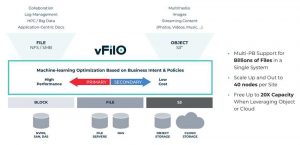
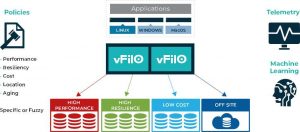
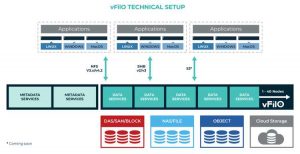
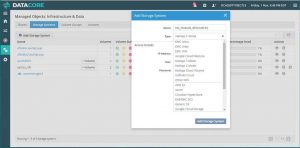
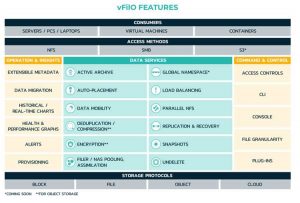
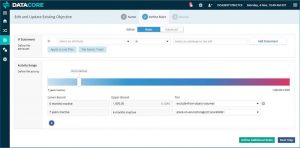
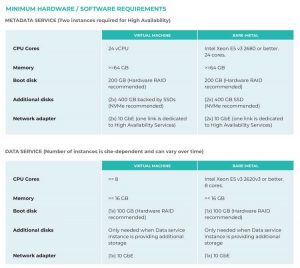




 Subscribe to our free daily newsletter
Subscribe to our free daily newsletter
